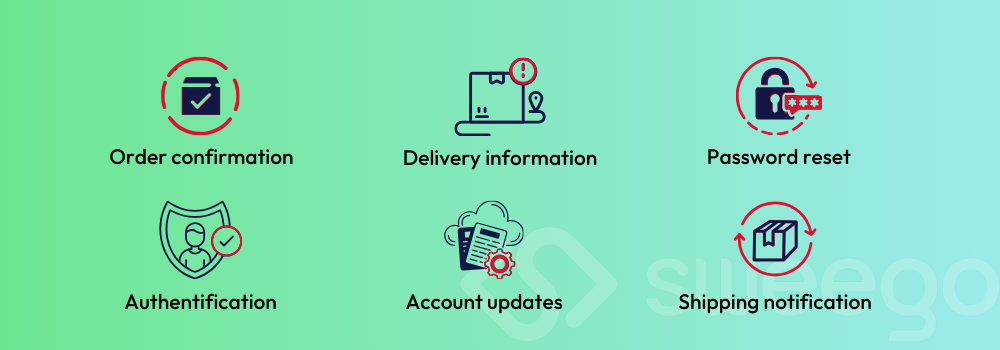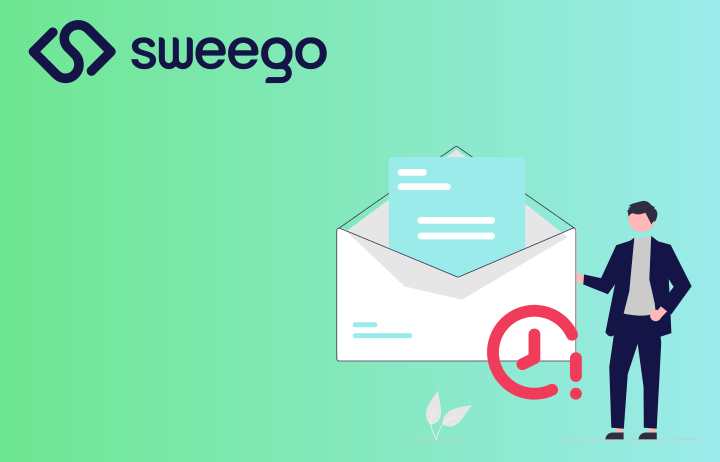We’re excited to introduce an eco-friendly new feature that allows you to add an expiration date to your emails directly through the Sweego platform. This feature not only helps you keep your email campaigns relevant and timely but also contributes to a more efficient and organized inbox for your recipients. While it’s not a silver bullet for going green, it’s a meaningful step that any sender can easily implement.
What is the email expiration date feature?
The email expiration date feature enables you to automatically set a timeframe after which your emails are considered obsolete. Many emails have a limited time life:
- marketing emails
- promotional emails
- transactional emails
Think about flash sales, seasonal promotions, or order confirmations that are only relevant for a few days.

When an email becomes obsolete, what’s the point of keeping it in your inbox? With this expiry date, email software providers and editors will be able to enable their users to automatically delete expired emails, thus limiting their digital footprint.
The project, initiated by Badsender, is detailed on the Zero Carbon Email website.
An RFC proposal has been submitted to the IETF replaced by this one and it’s actively studied.
📑 How to create an efficient transactional email
By using this feature, you can ensure that your emails don’t clutter up inboxes or consume unnecessary resources after they’ve outlived their usefulness. This approach helps you maintain a cleaner, more organized communication strategy.
It provides your recipients a better experience by keeping their inboxes relevant and timely.
How does the email expiration date feature work?
Setting an expiration date is simple and intuitive with Sweego. Here’s how you can add an expiration date to your emails in only steps:
- Specify the expiration date
By API, in the parameters of the /send method, there is an expires object in which you can add a specific date or duration in days, months or years that fits the nature of your campaign., with a minimum of 15 days.
For instance, if you’re running a flash sale, you might set the expiration date for 7 days after the email is sent, ensuring it’s removed once the offer is no longer valid. Or if you prefer, indicate the date at time at which the email will expire.
If you’re using our SMTP, you can indicate the expiration date directly in the header.
Check our documentation to know how to implement in Sweego
2. Seamless integration with email providers
While the concept of email expiration dates is still gaining traction, Sweego has implemented this feature in a way that’s ready for wider adoption.
As more email providers begin to support this functionality, your emails will be automatically deleted according to the expiration date you’ve set, without any extra steps needed from the recipient.
Tech people : Analyze your email header easily
Why add an expiration date to your emails?
An action linked to your values
By enabling this feature, you’re not only optimizing your email campaigns but also contributing to a more streamlined digital ecosystem. It’s a small, yet significant step towards ensuring that your communications are relevant, timely, and aligned with the evolving needs of both your recipients and the environment.
A snowball effect
The email expiration date is a group project that only works with the strength of the collective.
We need :
- end-users willing to activate this feature
- email routers, like Sweego, willing to develop the solution
- email providers willing to implement a feature for their users to delete expired emails
Without these 3 categories of players, email expiration will remain just a project.
So take a minute to activate the functionality or ask your router to join the project.
Ready to get started?
Log in to Sweego and add an expiration date to your emails today.
 EN
EN FR
FR